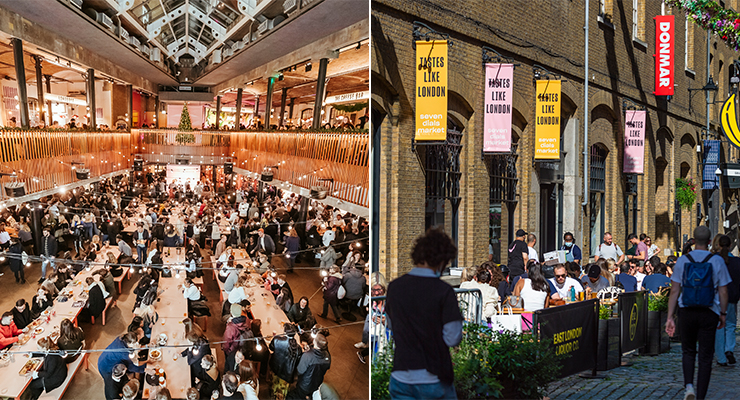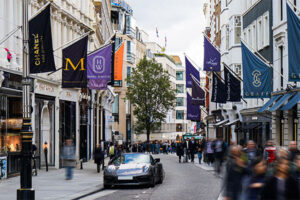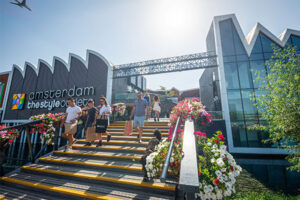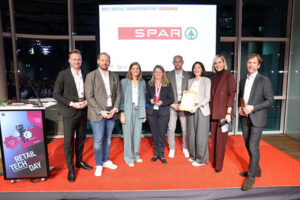By Cat Stevenson (Associate, EMEA Cross Border Retail and Leisure) and Jennifer Milne (Senior Consultant, EMEA Cross Border Retail and Leisure)
A successful european food hall often has a connection to the place it is in, whether that be the regeneration of a cultural landmark or encompassing a city’s most popular dishes or vendors into the space. Total size can vary from 300 to 10,000 sqm but it is not the size of the food hall that adds to success, it is the offering. Providing an all-day offer drives footfall and increases dwell time. Food halls are flexible spaces able to host a variety of events and classes, which are becoming a staple for these venues. It is also common to find historical markets leaning into the concept, widening their customer base and allowing people to try before they buy!
Travel a bit further and you’ll be spoilt for choice once again with the plethora of food halls outside of Europe. It’s no accident that Time Out chose to open 5 Time Out Markets in North America in 2019 following the success of their first location in Lisbon. Touching down in trendy neighbourhoods like Dumbo, New York and Fenway, Boston means catering to local and tourist foodies alike and subsequently driving its own footfall. Interestingly, some casinos in the states are swapping their longstanding buffets for a food hall concept, in an attempt to attract a younger demographic. On the other side of the world, APAC is seeing a different kind of expansion. With street food originating in Asia, the food hall concept is slightly different here with locations in shopping centres or office buildings being the norm. The food mix is usually more focused on local cuisine and the social aspects are often arcade or gaming related.
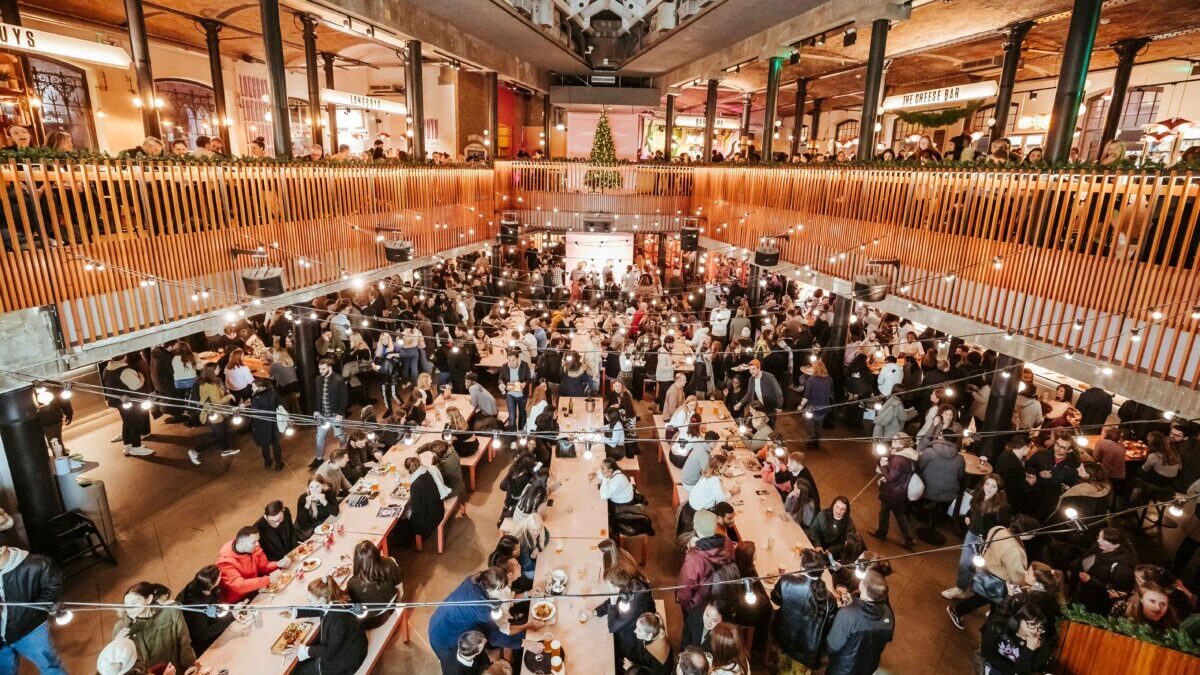
The COVID-19 pandemic had a significant impact on food halls across Europe, influencing their operations, financial health, and long-term strategies. Whilst some food halls had to close their doors, the overall trend has been one of adaptability and growth – particularly in a post-Covid world where consumers are craving spaces to socialise and feel connection. The initial draw may be to curb your hunger with a carefully curated mix of local vendors but these destinations are designed to appeal to more than just your appetite. Why not learn to salsa after you lunch or go to the gig downstairs to extend the first date that’s going so well? Providing an all-day offer creates a bustling and attractive spot to hang out, eat out but also go out-out. Matt Ashman (Head of Restaurants and Leisure at C&W) says that “from an operators’ perspective, this increases the time people spend in the food hall and the potential revenue benefits they can derive from that”. Bars can also provide an additional support in terms of footfall and dwell time. Not to mention they are often run in-house and account for a significant proportion of revenue.
Architecture also stands out as a key driver of food hall footfall and often results in brilliant demonstrations of redevelopment and community regeneration. Examples include Mercato Metropolitano’s refurbishment of a Grade-1 listed church in Mayfair but also the transformation of a disused car park for their new Ilford site, which was part of a larger redevelopment scheme in the area. Both benefit the local community and landscape but more importantly, make them more of a destination. Another prime example, which made it on to the front cover of our Food Halls of Europe report, is the redevelopment of the old Gare du Sud station in Nice. Once Nice’s main station, it was closed in 1991 and left abandoned for many years, falling into disrepair. Its historic significance and central location made it a prime candidate for redevelopment. Undertaken as part of Nice’s broader urban renewal initiative, Gare du Sud was restored and converted into a modern food hall which opened in 2019, allowing locals and tourists to enjoy the building once again.
Unlike the current F&B industry, which is largely dominated by chains and franchises, there is a good variety of independent versus chain food hall operators. Independent locations are often opportunity based or part of a larger development, whereas food hall chains like Manifesto have expanded outside of their home country using their model. To find out what helps make the decision to expand internationally, we thought it best you heard it from KERB, who are in the process of fitting out their next overseas food hall location, in Berlin:
“Starting out as a pop-up market at a Kings Cross building site in 2012, KERB now operates iconic food halls internationally, provides catering that you actually want to eat at the most recognisable events, and runs a social enterprise that supports people from disadvantaged backgrounds, removes barriers to employment & entrepreneurship, and accelerates the growth of new food businesses.
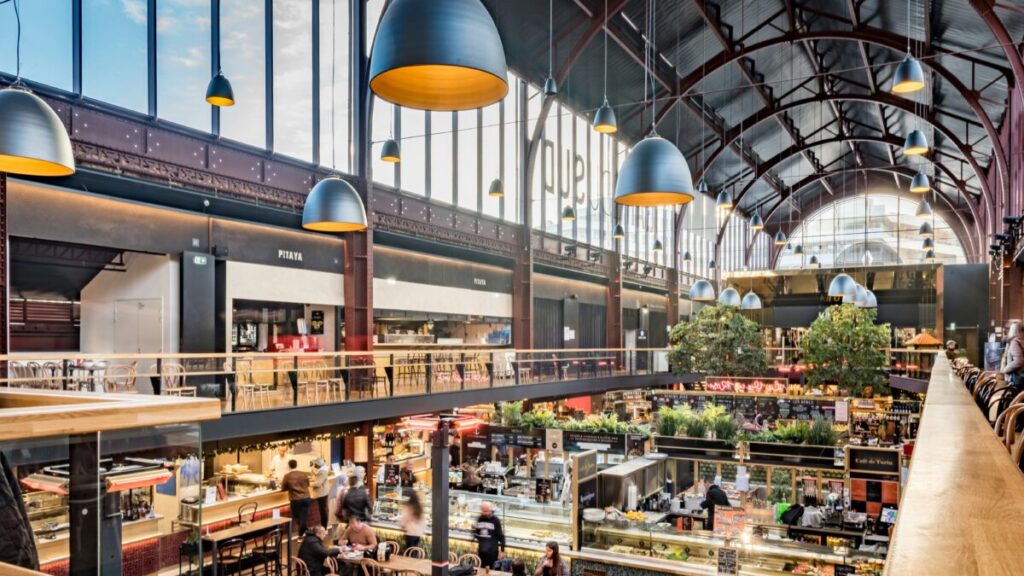
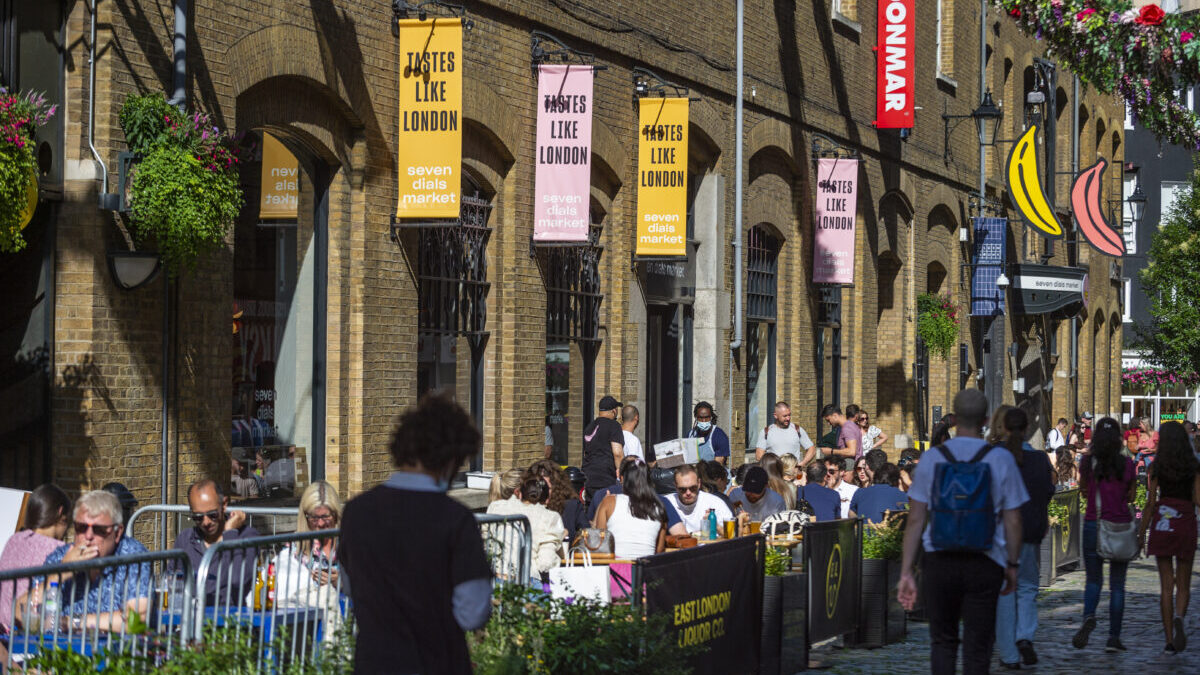
KERB opened Seven Dials Market in 2019 and has disrupted the homogenisation of Central London’s food offering ever since – with twenty diverse street food businesses now feeding upwards of 1.5 million hungry visitors every year. The site generates a huge footfall, being in the heart of Covent Garden, with upwards of 30,000 people visiting Seven Dials Market every week.
Despite the phenomenal success of KERB’s flagship UK food hall, the business is currently focused on international projects. Why?
- The food hall market in the UK is highly competitive and rents are high – it needs to be the right opportunity for an independent business that isn’t backed by private equity .
- The criteria KERB set for a food hall is strict: it must be an iconic space in a large footfall area. Brilliant food and drink has to be what drives people in – not programming or events.
- There needs to be a strong independent street food scene that KERB can work with to accelerate growth, foster community and ultimately bring energy and an environment that looks and tastes like the local area.
- KERB does still see opportunities for its expansion in the UK, but through smaller neighbourhood concepts and its thriving events catering business.
KERB will open a new food hall early next year in Berlin’s Potsdamer Platz at an iconic location. Like in London, KERB is integrating nods to the building’s history (an independent cinema) into the design of the space and its visual identity and is currently building an incredibly exciting line-up from Berlin’s local independent street food scene. The ambition is to replicate the impact that KERB has had in London by rolling out similar coaching programmes and accelerating the growth of brilliant independent food businesses.
At Potsdamer Platz, there are many casual dining options, but there is a lack of brilliant independent food served in an exciting atmosphere. It’s an ambitious project – unlike London, Berlin doesn’t really have food halls championing independent street food that remain open all week round. Yet the area ticks the boxes – it’s central, with good footfall and part of a wider local regeneration push.
As well as expanding to Berlin, KERB recently opened Saluhall in San Francisco (a partnership with INGKA centres). Like in Berlin, Saluhall is part of a wider push in one of downtown San Francisco’s most beleaguered neighbourhoods to shift the area from a dead zone to a hub of activity. As offices have emptied, a handful of businesses – including KERB – are trying to bring growth to the area again. KERB is currently hiring for a social impact coach in the city to roll out their social enterprise programmes which identify raw talent and accelerate their growth as street food businesses through coaching and trading opportunities.
Although KERB isn’t actively scouting new locations, if an opportunity is presented that ticks the above boxes, they will go all-in.“
In C&W’s Food Halls of Europe report, we speak to key players in the market including Time Out Market, KERB and Manifesto to gain an insight into what’s driving food hall expansion decisions. Openings are not slowing down and while larger multi-use spaces are still performing well, operators are starting to look at smaller formats to cater for thriving neighbourhood locations and transport hubs. For a more in-depth look at the market, with a deep dive into country specific trends and the updated Food Halls of Europe Directory, read the full report here: https://cushwake.cld.bz/food-halls-of-europe

Cat Stevenson
Cat Stevenson is Associate, EMEA Cross Border Retail and Leisure at Cushman & Wakefield.

Jennifer Milne
Jennifer Milne is Senior Consultant, EMEA Cross Border Retail and Leisure.
